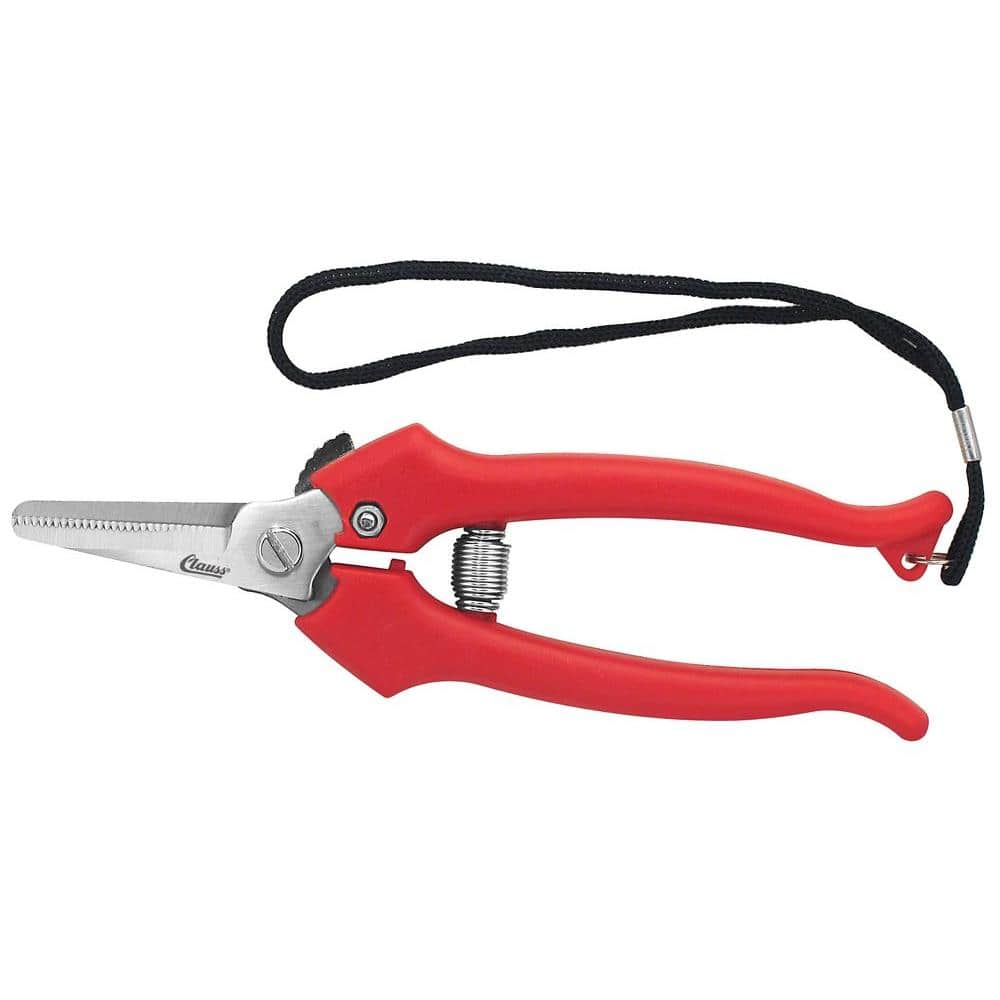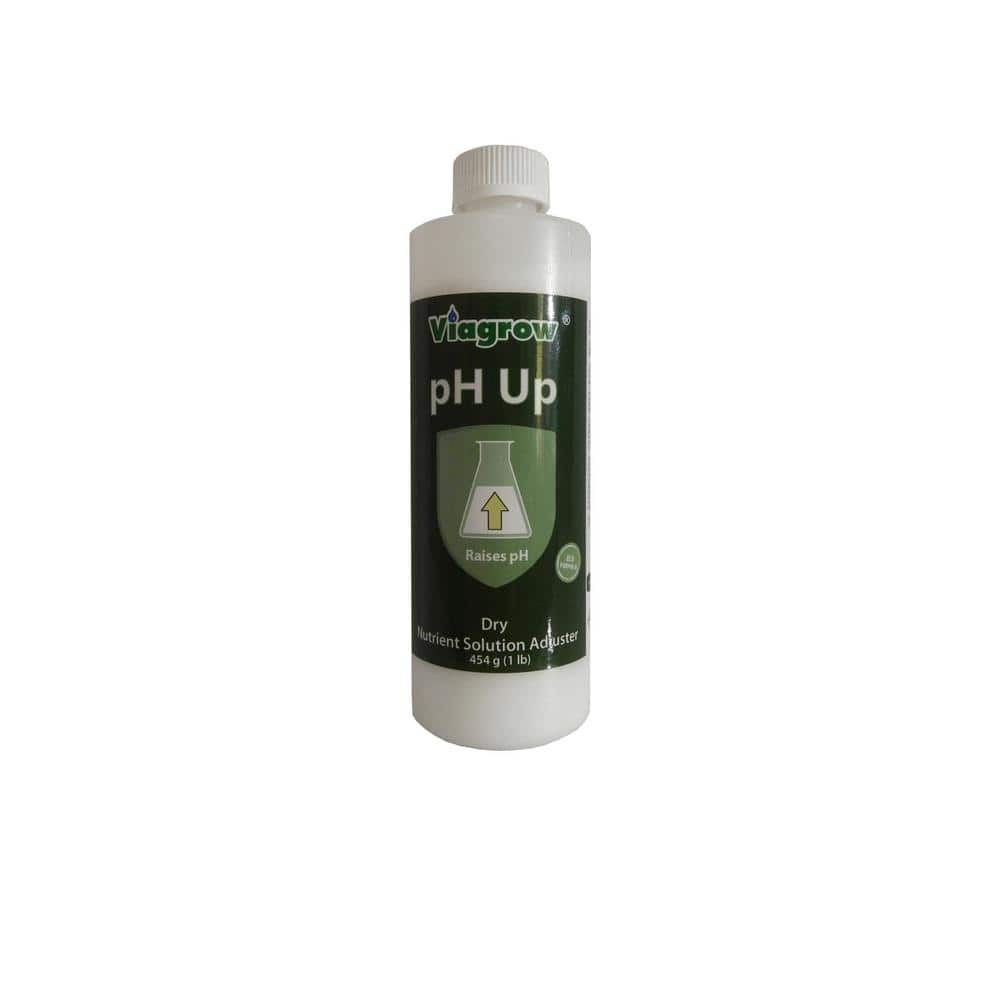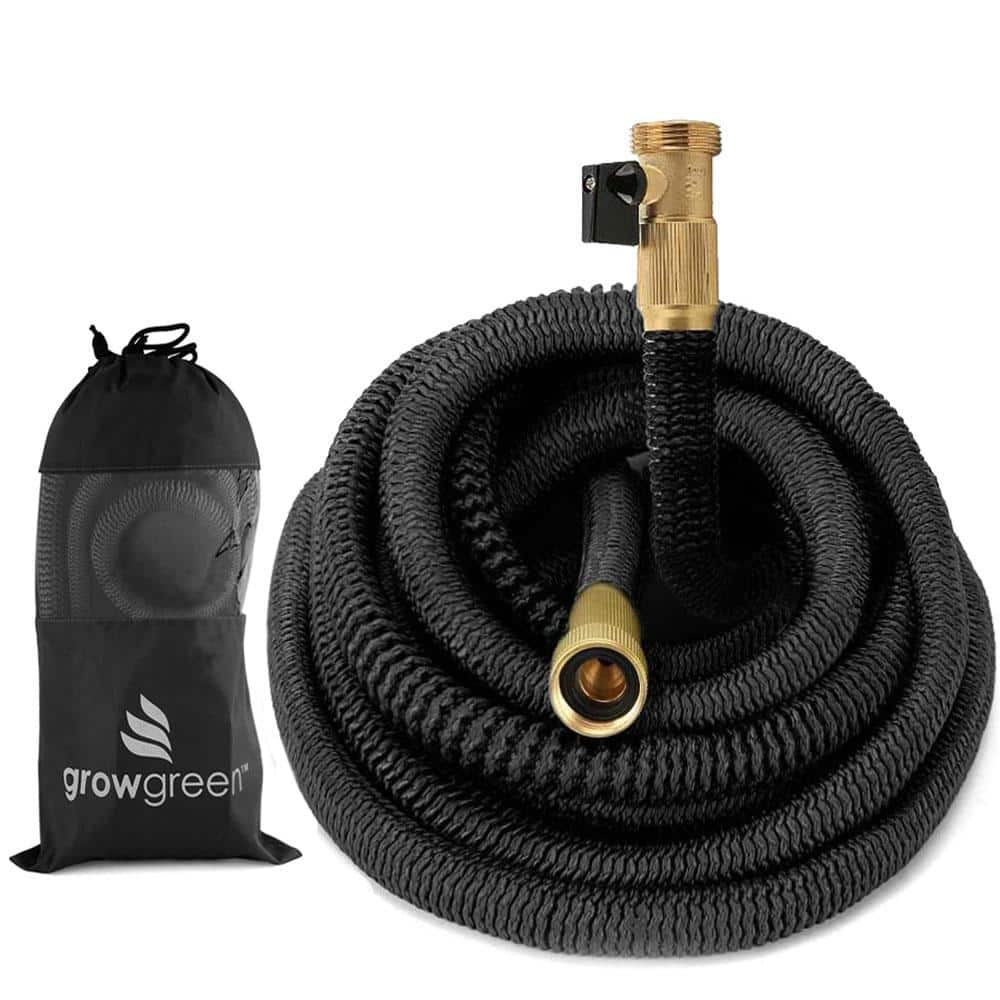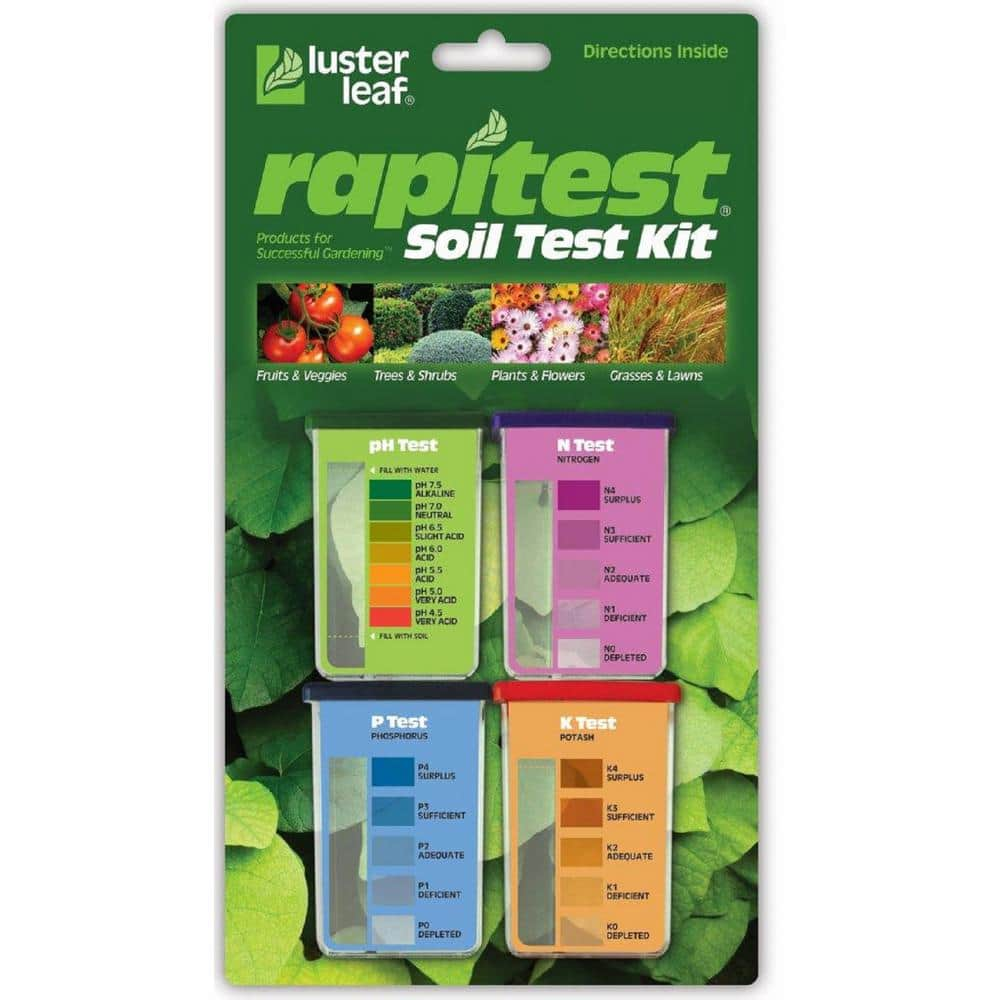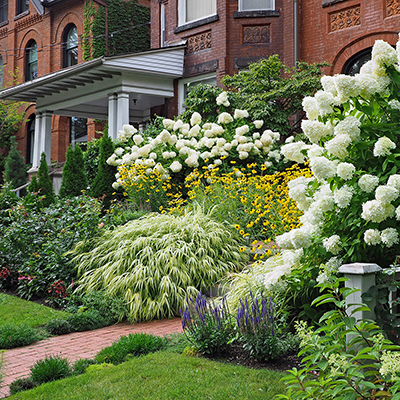Types of Hydrangeas

Last updated October 16, 2024
For a garden that explodes with color, you can’t miss with hydrangeas. These carefree perennial shrubs open their big, beautiful flowers in summer, adding pops of pink, blue, lavender and snowy white to the landscape. Hydrangeas fade beautifully into fall as well, with some varieties changing from creamy white into shades of dusty pink.
You may be surprised to know that while hydrangeas look delicate, they’re actually pretty tough and adaptable to a variety of conditions when you choose the right type. In this guide, you’ll learn about the best hydrangeas for your garden and steps for planting hydrangeas. Plus, get tips on caring for hydrangeas.
Table of Contents
Facts About Hydrangeas
Mophead Hydrangea
Smooth Hydrangea
Oakleaf Hydrangea
Panicle Hydrangea
Climbing Hydrangea
Facts About Hydrangeas

Hydrangeas are woody shrubs often treated like perennials due to their spectacular blooms and the fact that they go dormant in winter. Hydrangeas are suited to many climates, from hardiness zones 3 to 9.
Hydrangeas can be grown in-ground and in containers. They make lovely gifts that can be enjoyed indoors and then planted in the landscape.
The blooms make outstanding cut flowers for centerpieces and handmade bouquets of cut flowers from your garden. In late summer, the blooms can be cut, dried and used in crafts like dried flower wreaths.
These are just a few of the many reasons for planting hydrangeas in your garden. Read on to learn more about the different types of hydrangeas.
Mophead Hydrangea

Mophead hydrangeas bloom in summer with big, fluffy blue, purple, red and pink flowers. Properly called Hydrangea macrophylla (for their large leaves), they’re also known as French, garden or florist’s hydrangea. This category also includes lacecaps that feature a frilly floral edge on a flat cap.
Hydrangea macrophylla bloom on old wood and set buds the year before they bloom. They probably won't need pruning, in fact, the old growth helps protect the plants in cold climate winters. If you need to prune mophead hydrangeas, do it in the window after they finish blooming and before they set next year’s blooms. This category includes remontant (reblooming) varieties like ‘Endless Summer.’
Smooth Hydrangea

Smooth hydrangeas (Hydrangea arborescens) flower in early summer in shades of white and pink in both mophead and lacecap styles. To distinguish from mophead hydrangeas, smooth hydrangeas have slender, woody stems and thinner leaves. If you're looking for a true white hydrangea, look to smooth hydrangeas for your garden. Mophead hydrangeas come in beautiful colors, but not a true white.
The classic smooth hydrangea is ‘Annabelle.’ Look also for Proven Winners’ ‘Incrediball' and ‘Invincibellle’ series. Smooth hydrangeas, along with oakleaf and climbing hydrangeas, are native to the U.S.
Smooth hydrangeas are suited to cold climates because the flowers grow on new wood and won’t be damaged in harsh winter weather. Look for re-blooming varieties of smooth hydrangeas that will give you a second show of blooms at the end of the growing season.
If you need to prune your smooth hydrangea, you'll want to do that in late winter or early spring before they set buds.
Oakleaf Hydrangea

Oakleaf hydrangea, Hydrangea quercifolia, looks just like it sounds. This hydrangea features plumes of creamy white or pink blooms on stems with distinctively lobed leaves like those found on oak trees.
Oakleaf hydrangea is one of the hydrangea species that are native to the U.S. Oakleaf hydrangeas are best suited for moist woodland gardens, and woodland edges. The foliage takes on shades of deep mahogany, green and rust in autumn, and its peeling bark is attractive in winter.
These hydrangeas bloom on old wood and don't generally need pruning. If you like, you can trim out dead branches any time after they finish blooming in summer.
Panicle Hydrangea

Panicle hydrangeas are easy-growing favorites that grow in USDA hardiness zones 3 to 8. One of the most popular cultivars, ‘Limelight’ can even handle the heat of zone 9. Other names for hydrangea paniculata are peegee hydrangea and hardy hydrangea.
Look for varieties like Proven Winners’ ‘Quick Fire’ and ‘Pinky Winky’ and First Editions’ 'Vanilla Strawberry’ that emerge creamy white in summer and turn pink as temperatures cool in early fall.
Plant panicle hydrangeas in sites with up to six hours of sunlight a day. Like most hydrangeas, panicle hydrangeas appreciate afternoon shade. Panicle hydrangeas are tolerant of soils, even clay soils.
Panicle hydrangeas bloom on new wood. This means that when the plant breaks dormancy in spring, it sends out new stems and buds. Experts recommend when the plants go dormant in winter, leaving empty branches for bird and beneficial insect habitat. In very late winter, just as the plant is ready to wake up, that's the time to prune panicle hydrangeas.
Tip: Expert rule of thumb for pruning panicle hydrangeas is cutting no more than 1/3 the volume of the plant.
Climbing Hydrangea

Climbing hydrangeas are prized for their large, creamy lacecap blooms and deep green foliage. Climbing hydrangeas are native to the U.S., and known for beign slow growers. But, with time, some cultivators can grow to 50 feet.
These beautiful vines need the support of lattice or a trellis, and can be grown over arbors and along fence, the better to send out their fragrance to passersby. This hydrangea is native to coastal plains and mountain areas. It likes bottomlands and damp forests and can be grown as a groundcover, but will not bloom unless it's climbing.
Climbing hydrangeas are suited to hardiness zones 5 to 7 and perform best in full sun to part shade. These pollinator favorites bloom from late spring through fall.
Climbing hydrangea blooms on new wood. If it needs pruning, late winter is the best time to cut it back.
Mountain Hydrangeas

Mountain hydrangeas, called Hydrangea serrata, are native to Japan and Korea. These beauties share many of the desirable features of mopheads, like rich colors and large blooms, but are tougher in inhospitable climates. If you've struggled with mophead hydrangeas in your garden, give mountain hydrangeas a try.
Mountain hydrangeas bloom on old wood and you likely will not need to prune them. You want to protect them from browsing deer that may nip off next year's buds. Many cultivars are patio-sized and ideal for containers.
These tough hydrangeas thrive in zones 5 to 9 and grow best in full to part sun.
What to Know Before Planting Hydrangeas

It's important to choose the right site for your hydrangea. All types of hydrangeas like moist, well-drained soil, and most need partial shade, especially in hot climates. (Avoid deep shade, though, or you won’t get many flowers, and don’t plant directly under trees, where the roots will compete for water and nutrients.) In general, hydrangeas can take more sun in northern climates than in southern parts of the U.S.
Don't let browsing deer destroy your relationship with hydrangeas. Plant hydrangeas close to your home, and in fact, containers are a good solution, especially if you plant the smaller, patio-sized cultivars. Protect tender hydrangeas with barriers like fences, and by using natural chemical repellents.
Planting Hydrangeas

Plant hydrangeas in fall or after the last frost in spring. Many hydrangeas bloom on the previous year’s growth, so a late spring freeze will kill new flower buds.
Look for remontant varieties of hydrangea macrophylla that bloom on old wood and new wood. If your garden doesn't get hit by a cold snap, you may get multiple flushes of hydrangea flowers each season.
Steps to Plant Hydrangeas:
- Dig a hole as deep and at least twice as wide as the plant's root ball. Hydrangea roots grow shallow and spread out.
- If you have well-draining soil, there’s no need to amend the planting hole. If your soil needs a boost, add organic compost to improve drainage.
- Gently release the plant from the container, break up the root ball and place the plant in the hole. Bring native soil around the root ball, up to the base of the plant.
- Water thoroughly after planting, and finish with a blanket of mulch to retain moisture.
- Hold off on fertilizing hydrangeas until after the plant establishes roots. Hydrangeas require care to keep them at their blooming best, especially in the hottest days of summer. Be sure to keep them watered. You can water by hand, or install a drip irrigation system.
How to Prune Hydrangeas

When it's time to prune hydrangeas, you'll need to know the type of hydrangeas you have in your garden and whether or not they bloom on old or new wood. Shrubs that bloom on last year’s buds are said to bloom on “old wood.” Hydrangeas that set buds on this year’s stems are said to bloom on “new wood.”
A general guideline is to prune hydrangeas that bloom on old wood after they finish blooming and before they set buds for next year. Prune hydrangeas that bloom on new wood in late winter or early spring before they set buds. Follow plant tag or online instructions for the hydrangeas in your garden.
Tip: For the longest blooming season, choose re-blooming types of hydrangeas like 'Endless Summer' that flower on both old and new wood.
Tips for Growing Hydrangeas

Tips on caring for hydrangeas:
- Keep hydrangeas mulched through hot summers to retain moisture and in winters to protect the roots.
- Use a slow-release fertilizer or a 10-10-10, applied in early spring and again in early fall to promote growth and blooms.
- Hydrangeas may wilt in hot summer afternoons. Oftentimes, this is due to heat rather than thirst. Make sure to site new hydrangea plantings so they’re protected from harsh afternoon sun, and give them plenty of mulch to keep their roots cool.
- You can change the color of mophead and mountain hydrangeas from blue to pink or from pink to blue. Begin with a soil test to determine the presence of aluminum and apply dolomitic lime to change the color from blue to pink. Apply aluminum sulfate to change hydrangea blooms from pink to blue.
- Bring your patience. Changing hydrangea color is a process that takes at least several months and more than one season to see results. Keep in mind you cannot change the color of white hydrangeas, and adding pennies to soil will not change the color, either.
Add color and beauty to your garden when you grow hydrangeas. Whether you're planting mophead, panicle or oakleaf or any other kind, hydrangeas require proper planting, pruning and care. When you're ready to plant hydrangeas and you need the right plants, tools and potting soil, The Home Depot delivers
online orders
when and where you need them.
